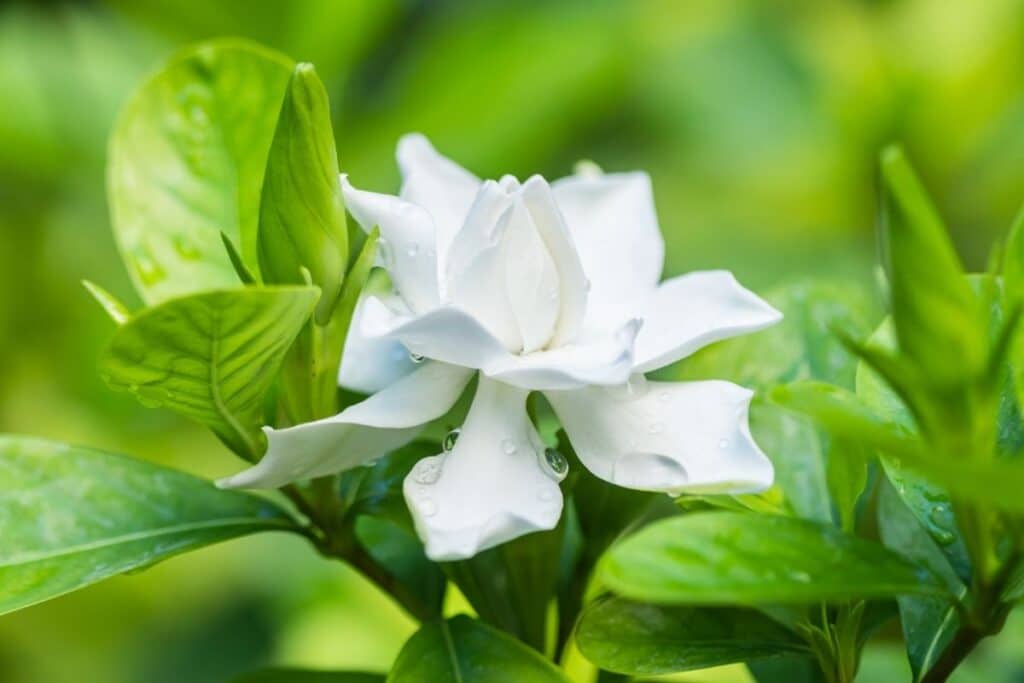Gardenias are known internationally for their sweet fragrance and beautiful waxy petals. This evergreen flower has a very shiny dark green foliage. As a result, they sure catch everyone’s attention, as they are a very popular ornamental shrub.
Even though this flower is relatively easy to grow, they do require gardeners to follow certain steps to grow gardenias successfully.
Are you interested in sowing your gardenias and filling a garden with these flowers? Keep on reading this article!
Basic Facts about Gardenia Plant
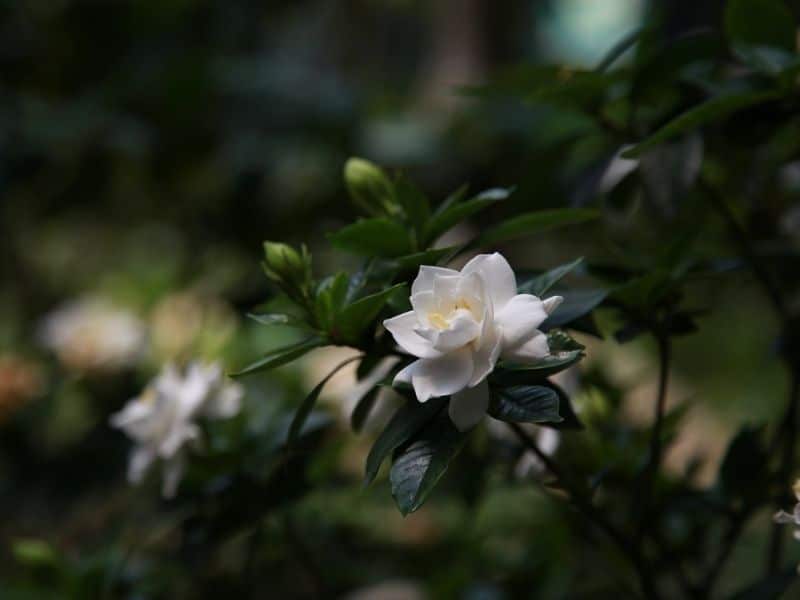
- Its scientific name is Gardenia augusta. They belong to the coffee family of plants Rubiaceae.
- Although they are native to South Africa, China, Taiwan, and Japan, nowadays, they can be grown all over the world. These beautiful flowers adapt well to various climates, including tropical and subtropical regions.
- According to the US Department of Agriculture, this type of flower will thrive best in zones 8 through 12. However, they can also be grown indoors.
- Its petals can be white or yellow.
- Some people confuse them with jasmine flowers.
- It is an ornamental shrub.
How To Grow Gardenia Flowers
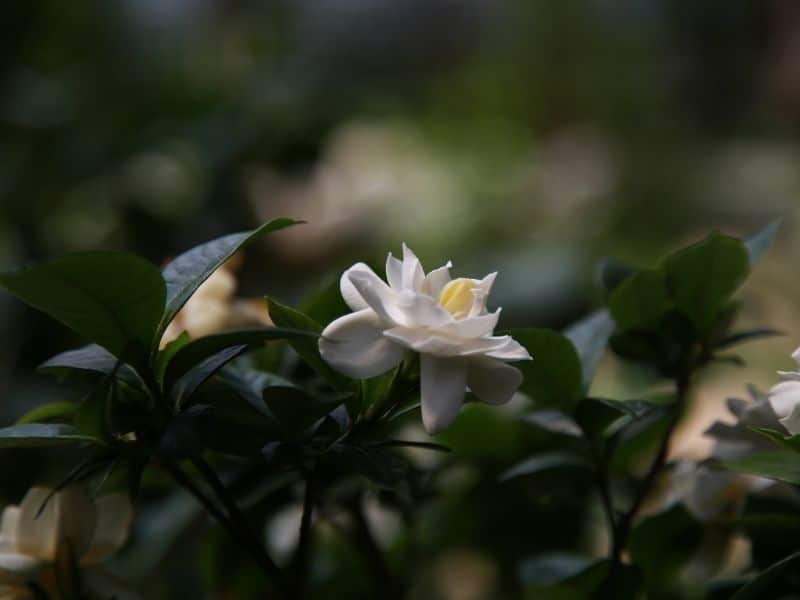
Gardenias will healthily grow if they are exposed to full sun. However, they also appreciate a partially shaded area, especially in zones where the heat is too strong during the summer. These gardenias prefer humid areas as they would struggle to grow in arid conditions or in places where droughts are common.
It would be best to plant gardenias in the early fall or spring. Ideally, you would reserve an area for these gardenia shrubs to grow by itself, and it would be great if they were planted in a raised bed as this will give them all the room they need.
In hot climates, gardenias grow best with morning sun and afternoon shade.

Do know that gardenias love to have their roots spread out throughout the soil; keep this in mind when designing a garden.
Soil Gardenias Requirements
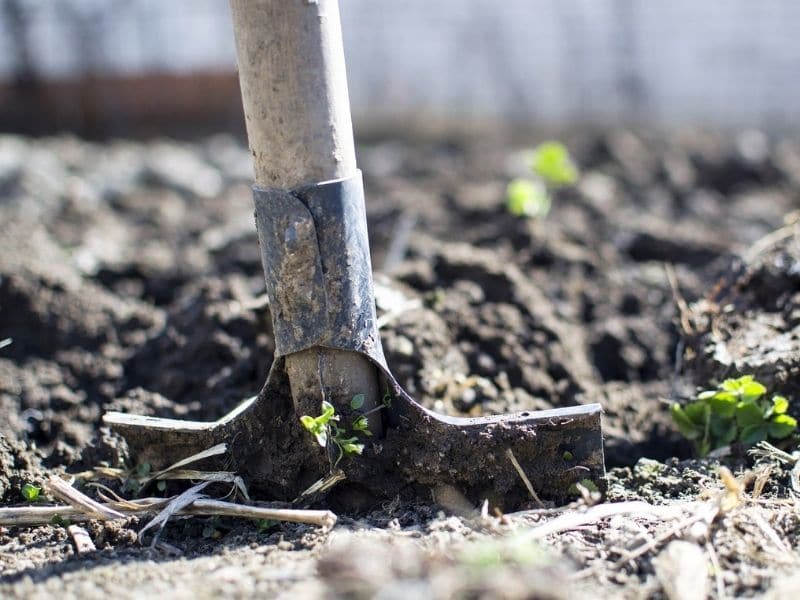
Planting gardenias in well-draining, acidic soil with a pH level between 5.0 and 6.5 is ideal. A rich, loamy soil enriched with organic matter, such as compost or peat moss, provides the best growing medium for gardenias.
These acid loving plants also benefit from good soil aeration, so incorporating perlite or coarse sand into the potting soil mixture can improve drainage.
It’s essential to avoid heavy or clay-rich soils, as they can retain too much moisture, leading to root suffocation and poor plant health. Consistent soil moisture levels are crucial for the optimal growth and blooming of gardenias.
Water Needs
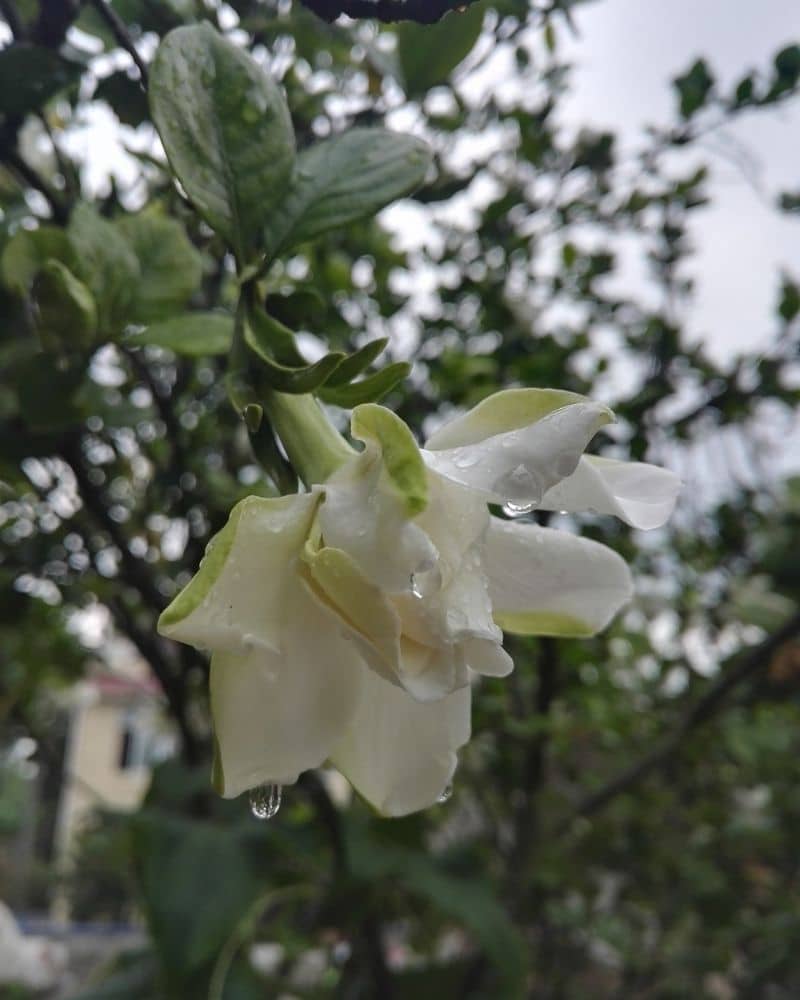
Gardenias love water, and they need to be watered at least an inch a week. If water is abundant where you live, you can add some more. However, make sure their soil is draining well, as this potted gardenia won’t survive puddles of water around them.
Mulch

Mulching around gardenias with a layer of organic mulch, such as pine bark or wood chips, helps retain soil moisture, regulate temperature, and suppress weed growth. Apply a 2-3 inch layer of mulch around the base of the plant, keeping it several inches away from the stem to prevent moisture-related issues.
Fertilize Gardenias
If possible, feed the gardenia tree with an organic fertilizer. Alternatively, you could add some doses of coffee grounds to the soil. You could compost it first or you could apply it directly to the soil.
Pruning
Pruning gardenias is essential for maintaining healthy and vibrant plants. Regularly remove faded flowers through a process called “deadheading.”
This encourages longer-lasting flowers and prevents the plant from wasting energy on seed production. Time your pruning after the blooming season but before the daytime temperature falls below 65°F (18°C).
Wait until the flowers begin to fade, usually 1 or 2 weeks after blooming. Use sharp pruning shears for branches up to 1.5 inches thick, and disinfect tools with a solution of rubbing alcohol and water.
Trim branches to your desired height and shape, and consider cutting away half of the oldest branches to allow space for new growth.
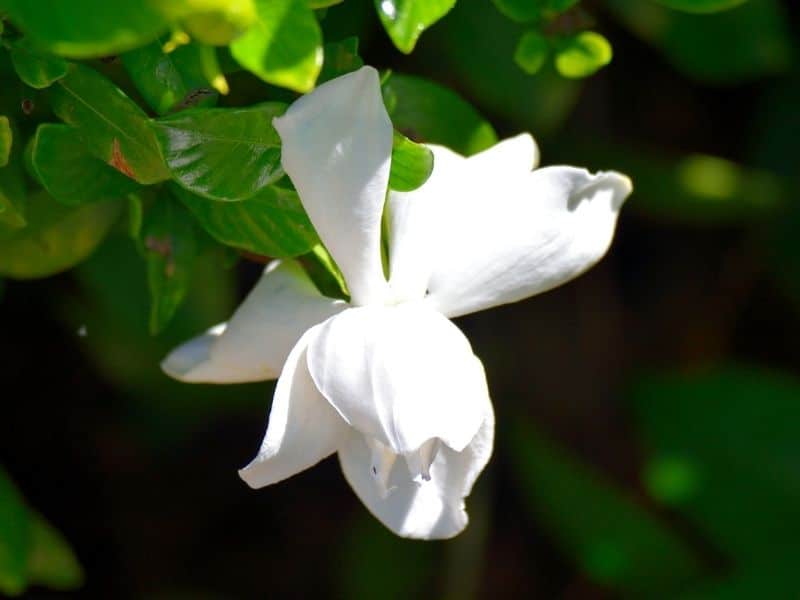
Winter Protection
Applying mulch is necessary during this time, especially if you live in a cold gardening zone. Alternatively, add some breathable fabric that allows your plants to keep the warmth within them.
Gardenias are not fond of cold climates. If this is where you live, bring the gardenia plants indoors during the winter months.
Propagation
The best time to propagate gardenias is during the summer. Cut the tip of a strong branch, take away all of the blooms it may have and remove some spent leaves. Place it in a cup and fill it with water. It will start blooming within a couple of days. This cutting could then be planted when it’s long enough.
How To Care for Gardenias

If growing indoors, make sure you mimic nature’s conditions. This way, your plants will grow healthily. They need plenty of sunlight to thrive, but avoid placing them too close to doors or windows, as the plant could be affected by cold winds.
During this time, it won’t be necessary to water them as often as before. In fact, they will only require water once a week or so, depending on the location.
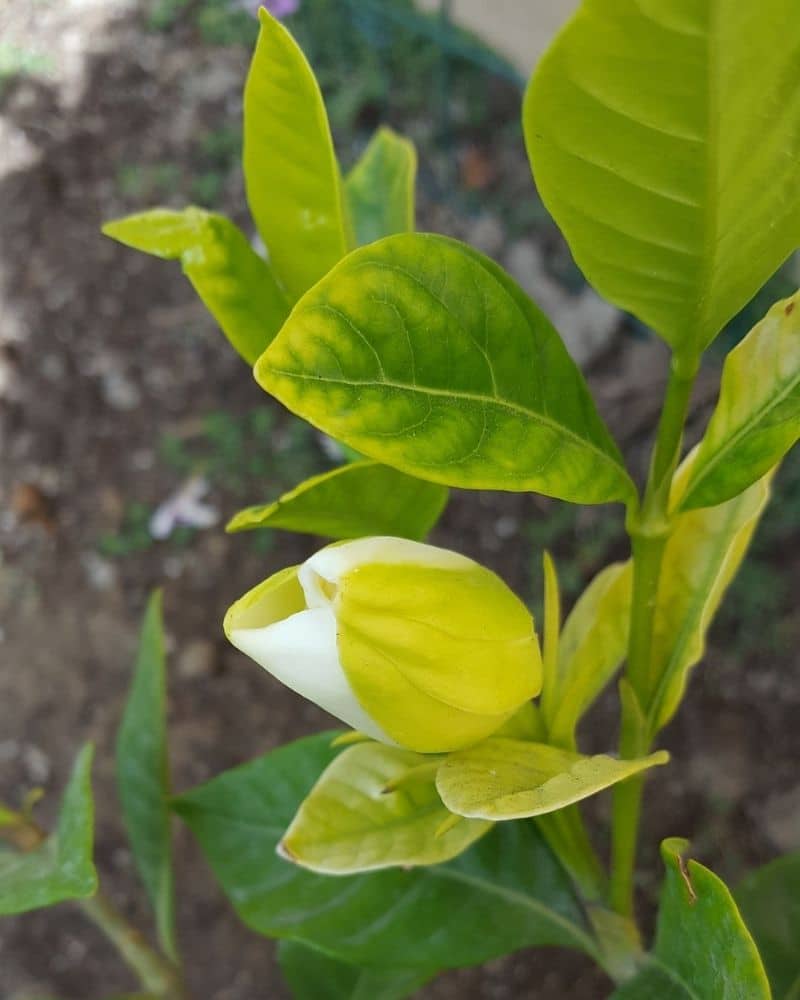
Sometimes, gardenias like to tell their cultivars that something is not going right, and they do so in numerous ways. For example:
Yellow Leaves
If gardenia trees are grown in alkaline or clay soils, they will immediately know it. You will too, as their petals will turn yellow or sometimes will even get a green vein that goes across. This is referred to as chlorosis and it means the plant is in need of iron.
If this is the case, go to your local nursery and ask for an organic fertilizer for this plant. This way, you will be able to slightly amend the soil and the plant!
Pests and Diseases
This flower is highly susceptible to mealybugs, spider mites, and scales, and they are usually found underneath the leaves or where the stems almost touch the soil. These pests are easy to identify, though: if there are hard, brown shells that seem to be immobile, then these are the scales.
If, on the other hand, there are white cottony egg sacks, then these are the mealybugs.
Additionally, keep an eye out for another common issue: powdery mildew, which can affect the leaves. To combat these pests, you can make or purchase an organic insecticidal soap.
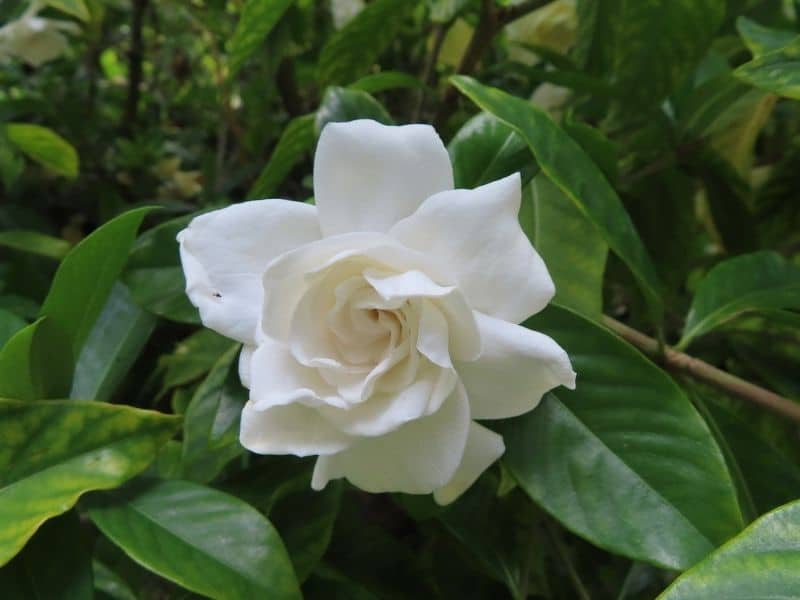
Types of Gardenia Tree
There are more than 250 types of gardenias. Here are the most common varieties of this plant:
Veitchiana
It has double white flowers. They are ideal for containers as an ornamental plant, although they tend to grow slowly.
Mystery
They too have double flowers. However, this variety is bigger than the rest of the gardenia bushes. They prefer to be fully exposed to the sun unless they are sown in a very hot location.
Radicans
This dwarf variety is often used as a cover crop or groundcover. Their whole life’s mission is to bring nutrients back to the soil.
Miami Supreme
This is one of the largest types of gardenia bush, as it can reach up to 6 feet in height. It also has double flowers and white petals. It will bloom from spring through summer.
Summer Snow
As its name suggests, this variety of gardenia shrub is very hardy. In fact, they could even be grown in USDA zone 6 without the need to protect it with a breathable fabric.
Aimee
Also known as ‘’First Love,’’ this type of plant has larger flowers and is overall a larger shrub in comparison to other varieties. They will bloom throughout the spring.
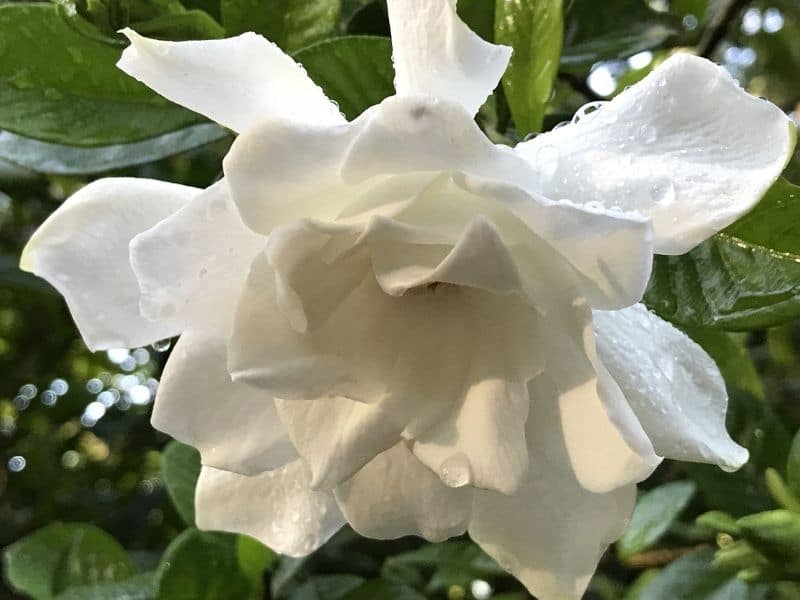
FAQs
Here are some of the most common questions about this flower:
How do you keep gardenias blooming?
To keep gardenias blooming, provide them with proper care, including sufficient sunlight, well-draining soil rich in organic matter, and regular watering. Additionally, fertilize gardenias with a balanced fertilizer formulated for acid-loving plants and prune them after flowering to encourage new growth and blooms.
Do gardenias do better in pots or in the ground?
Gardenias can thrive both in pots and in the ground, but their specific needs must be met in either setting.
Is gardenia plant indoor or outdoor?
Gardenias can be grown both indoors and outdoors, depending on the climate and growing conditions.
How often should I water my gardenia?
Watering frequency for gardenias depends on factors such as temperature, humidity, and soil moisture levels. Generally, water gardenias deeply and regularly, keeping the soil evenly moist but not waterlogged.
Conclusion
When people first encounter a gardenia flower, they will be amazed by its scent. It’s one of the best smelling flowers. These extremely fragrant flowers have an innate ability to make everyone happy solely by their presence!
They dislike overcrowded areas, and sometimes, gardeners struggle trying to see what these plants enjoy, so they can thrive. But with these simple tips, your gardenias will bloom in no time!
Don’t forget to check our blog for more flowers and ornamental plants with names and pictures.
Up next: Gardenia Flower Meaning and Symbolism
*image by kaewphoto/depositphotos

